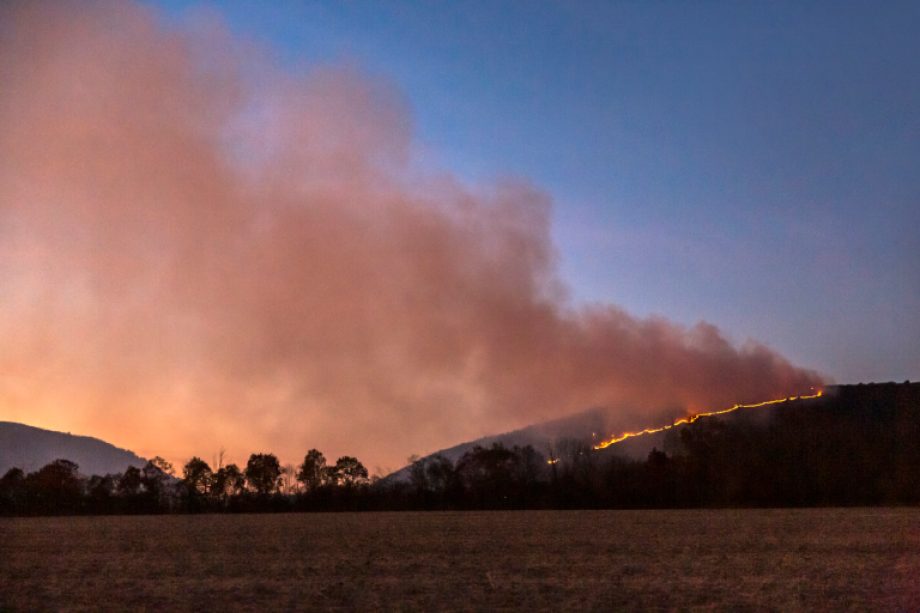Economy & Markets
1 minute read
When will the crisis in U.S. housing affordability end—and how?


The cost of insuring a home is on the rise. Persistent home insurance inflation is becoming an acute challenge for home buyers and homeowners in the United States today. A key reason: Insurers are moving rapidly to price in greater climate risk as they incorporate sustained underwriting losses from climate-related events in the recent past—and take future climate risks more seriously.
Insurers’ expectations of potential future losses are an important piece of the story, but present losses are already stacking up. “Insured losses from natural disasters in the U.S. now routinely approach $100 billion a year, compared to $4.6 billion in 2000,” according to a recent Senate Budget Committee report.1
What this means for homeowners and home buyers is straightforward: Costs to insure many homes are higher today, and in some cases, insurance is harder—in certain areas even seemingly impossible—to find. Meanwhile, estimates suggest that two out of three homes in the United States are now underinsured against climate risks.2
Here, we dive into the situation—how insurers wielding recent climate risk data and analysis are moving ever faster and in a more informed way on these risks than most home buyers or homeowners realize. Home prices do not yet fully reflect the risks, but they may begin to soon. Our analysis further suggests that wealthy homeowners with top-tier homes, often in risk-prone areas, should consider additional risk-mitigation strategies and alternative insurance options—the subject of our conclusion, which offers advice on protecting your property, securing insurance and other considerations.
The inflation shock of 2021–22 was painful, yet for most of the macroeconomy, it proved less permanent and more akin to a wartime shock (as we expected, and wrote). This has not been the case, however, for one corner of the U.S. economy: Home insurance inflation is very much a force now, and it is spiraling higher.
While insurance inflation is not well measured by the standard CPI, we find evidence of this micro crisis considering alternative data. Exhibit 1 shows that both U.S. homeowner insurance costs and CPI inflation increased gradually from 2013 to 2018. But since 2019, they turned up sharply and diverged: CPI has risen about 23% since versus home insurance inflation at 49%.
What is driving this emerging home insurance inflation crisis is complex. Next, we’ll consider a set of salient issues:
Insurance companies’ profitability is an important issue here: Insurers profit when the premiums they collect from homeowners exceed their payouts for homeowner losses (known as underwriting losses; we leave aside here the returns earned by investing premium dollars). In general, in recent years, insurers underwriting the homeowners segment have sustained underwriting losses each year from 2017 to 2023, except for 2019, according to a recent report from the U.S. Treasury Department.4 Significant losses from climate-related events caused the underwriting unprofitability during this period.
To be sure, many other factors besides climate-related losses are involved in insurance price inflation.5 During the pandemic years, the generalized rise in inflation and building costs was primary. But now, the primary cause is growing climate risk, and insurers trying to get ahead of it.
Insurers’ determination to take climate risk more seriously is evidenced by the fact that calculations of future climate risk have forced them to drop many homeowners. And these non-renewal actions are, in turn, inflating home insurance costs as a function of supply and demand: Less supply of insurers means higher prices for a homeowner insurance contract.
Insurers, using the extensive information they collect about climate risks and homes, have increasingly chosen not to renew policies, depending on the precise location, because the climate risk has made it no longer profitable to operate there.
No matter how the data is analyzed, the bottom line is unequivocal: Across the United States 2018–2023, there was a clear correlation between the non-renewal rate (itself a proxy for home insurance inflation, given the supply-demand dynamic) and climate risk.
These issues may be especially critical for our Private Bank clients. We’ve found evidence of a strong correlation: Luxury housing is more often situated in climate risky areas where insurers are pulling coverage. We analyzed the data at the county level across the United States and found that high-value homes are experiencing double the correlation (versus low-value homes) with insurance policy non-renewal.8 And the relationship is strongly linear: The greater the home value, the higher the non-renewal rate.
Why? Hypotheses include:
If this sounds alarming, keep it in perspective: So far, the budding home insurance crisis is not yet a fundamental driver of U.S. home prices. We plotted the Senate Budget Committee data on policy non-renewal alongside home price appreciation at the state level and found no meaningful relationship at this time.9
Yet we think the time is ripe for discussing it, even as home insurance pricing and availability are not yet the defining features of the U.S. housing market. We believe getting educated can help, especially for those considering buying in high-risk areas. Higher prices in those areas may be related to their uninsurability, and could be the seeds of a future crisis.
So we don’t take comfort in home prices’ seeming immunity from climate risk and the emerging insurability crisis. If home prices were already reflecting these risks, it would offer buyers greater accuracy and transparency.
As the Senate Budget Committee noted, climate-related disasters might wipe out 9% of the value of the world’s total housing stock by 2050, valued at $25 trillion.10 Dramatic, but worth bearing in mind.
Florida stands out in this context. It’s a market where house pricing does seem to be coming primarily under the influence of climate risk and associated higher insurance costs. Florida condominium prices declined more extremely than condo prices in the rest of country, according to a data analysis by ResiClub, a housing market research firm.
ResiClub found condo prices fell in 92% of Florida’s markets over the last 12–18 months, and said the evidence shows this phenomenon was driven, in part, by climate risks and by insurers voting with their feet. Insurers have indicated they’re less comfortable in Florida than in other U.S. states (Exhibit 4).11
Also, Florida and Louisiana stand out for experiencing the biggest spikes in home insurance costs, and the Senate report found that Florida saw the largest jump in the rate of non-renewal (1% of homeowners’ policies were canceled in 2019; that tripled to 3% in 2023). States hardest hit by surging non-renewals in that time period, after Florida: Louisiana, Oklahoma, Massachusetts, Mississippi, North Carolina, Connecticut and Rhode Island.
A multitude of causes explain Florida’s home price declines. In September 2022, Hurricane Ian, which caused an estimated at $112.9 billion in damage,12 was a big contributor, ResiClub notes. The collapse of the 12-story beachfront Surfside condo in June 2021 and the associated fallout took a significant toll. Strained demand is also emerging in Florida as a result of a pandemic home price spike, a spike in mortgage rates, higher insurance premiums and higher homeowner association (HOA) fees—together creating one of the most significant declines in recent housing valuations in the country.13
If you don’t live in, or intend to move to, the “Sunshine State,” remember that its troubles may be a harbinger for other risk-prone areas. Spiraling home insurance costs could become a fundamental driver of home prices across a much wider set of geographies.
Here’s some advice so you can take action:
1 “Next to Fall: The climate-driven insurance crisis is here—and getting worse,” Senate Budget Committee Staff Report, December 2024.
2 Lois Parshley, “As climate risks mount, the insurance safety net is collapsing,” Grist, October 10, 2023. https://grist.org/economics/as-climate-risks-mount-the-insurance-safety-net-is-collapsing
3 Jason Woleben, “US homeowners rates rise by double digits for 2nd straight year in 2024,” S&P Global, January 21, 2025. https://www.spglobal.com/market-intelligence/en/news-insights/articles/2025/1/us-homeowners-rates-rise-by-double-digits-for-2nd-straight-year-in-2024-87061085
4 “Analyses of U.S. Homeowners Insurance Markets, 2018–2022: Climate-Related Risks and Other Factors,” Federal Insurance Office, U.S. Department of the Treasury, January 2025.
5 “A range of intersecting and often overlapping factors may affect the increasing cost and decreasing availability of homeowners insurance, including inflationary pressures reflected in rising replacement and building costs; elevated cost of reinsurance; the movement of people into riskier areas; state insurance regulation of insurance rates and moratoriums on policy nonrenewal or cancellation; increasing litigation-related costs and increasingly frequent and severe climate-related disasters. More research is needed to isolate and quantify their independent and interdependent impacts.” Italics ours. Senate report, 2024.
6 Federal Insurance Office, Treasury Department, 2025.
7 Senate Budget Committee, December 2024.
8 Results available upon request.
9 Results available upon request.
10 Senate Budget Committee, December 2024. The report quotes “A $25 trn Hit: Global Warming is Coming for Your House,” The Economist, April 11, 2024, which extrapolated from MSCI data, noting MSCI included property damage and transition investments. https://www.economist.com/leaders/2024/04/11/global-warming-is-coming-for-your-home
11 Lance Lambert, “From boom to correction: Five reasons Florida’s housing market has weakened,” ResiClub, January 31, 2025.
12 Hurricane Ian was the third costliest hurricane in U.S. history.
13 Lambert, January 2025.
14 Sarah Kapnick, “Insurance: Weathering the storm of inflation, climate change and market-distorting state regulation,” J.P. Morgan LLC, March 31, 2025. https://www.jpmorgan.com/insights/sustainability/climate/homeowners-insurance-future
We can help you navigate a complex financial landscape. Reach out today to learn how.
Contact usLEARN MORE About Our Firm and Investment Professionals Through FINRA BrokerCheck
To learn more about J.P. Morgan’s investment business, including our accounts, products and services, as well as our relationship with you, please review our J.P. Morgan Securities LLC Form CRS and Guide to Investment Services and Brokerage Products.
JPMorgan Chase Bank, N.A. and its affiliates (collectively "JPMCB") offer investment products, which may include bank-managed accounts and custody, as part of its trust and fiduciary services. Other investment products and services, such as brokerage and advisory accounts, are offered through J.P. Morgan Securities LLC ("JPMS"), a member of FINRA and SIPC. Insurance products are made available through Chase Insurance Agency, Inc. (CIA), a licensed insurance agency, doing business as Chase Insurance Agency Services, Inc. in Florida. JPMCB, JPMS and CIA are affiliated companies under the common control of JPMorgan Chase & Co. Products not available in all states.
Please read the Legal Disclaimer for J.P. Morgan Private Bank regional affiliates and other important information in conjunction with these pages.
Bank deposit products, such as checking, savings and bank lending and related services are offered by JPMorgan Chase Bank, N.A. Member FDIC.
Not a commitment to lend. All extensions of credit are subject to credit approval.
